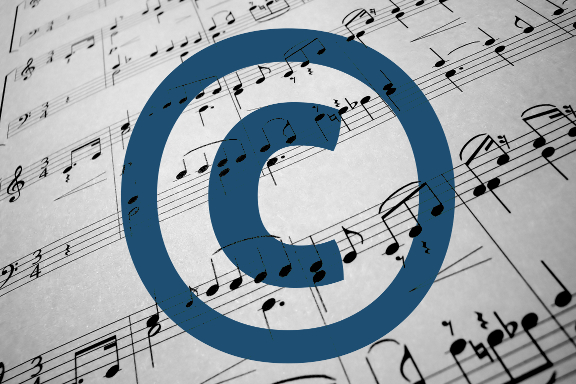Copyright Issues In The Music Industry
Introduction
The history of Indian music is too complicated for a person to be unfamiliar with the same. A quick introduction will benefit these persons who would undoubtedly be impacted more by what they hear than by what they read. The origin of music dates back to the Vedic era- about two thousand years ago. Perhaps, one of the most powerful and profound impacts has been Islam (and Persian music). India’s music is diverse, including folk, popular, mainstream, classical, and R&B styles. The classical music legacy, which includes Carnatic and Hindustani music, spans millennia evolved through countless ages and continues to be vital to Indians’ lives today as a source of spiritual inspiration, cultural expression, and sheer enjoyment. India comprises several dozen ethnic groups; each speaks its language and dialect and has its cultural traditions.
There are numerous copyright infringement cases in illegal derivative works and copies of copyrighted musical compositions happening in India every day. Despite high-profile figures from the Indian film and music industries being caught up in similar offences, infringement persists unabated by the Indian judicial system. The Indian courts do not strictly enforce copyright rules, and the general public is unaware of violation which results in a suppressed creative environment. The breach also shows disrespect for acknowledging the original copyrighted works’ owners and writers. Indian politicians have been working for many years to alter the present Indian Copyright Act to compel derivative works to provide due acknowledgement to the original copyright holder.
Copyright of Musical Work in India
Section 2(p) of the Copyright Act, 1957 (hereinafter referred to as Act) defines musical work. Section 2 of the Act provides copyright protection for both “musical compositions” and “sound recordings,” with each category defined differently. The definition of a musical piece makes it very apparent that spoken or sung words are expressly prohibited. Thus, although words used in the musical composition do not qualify for protection under Section 2(p) of the Act, they may be eligible for protection as a literary work, or a song composed of music and words may qualify for protection as a sound recording. There are two distinct types of work: sound recordings and musical pieces. Section 2(xx) of the Act defines sound recording separately.
In contrast to composers, who are the authors of musical works, the author of a sound recording is the sound recording producer. Musical works require correction, which is accomplished via sound recording. A sound recording may include musical material, though not all sound recordings do. A song created by one person, performed by another, and written by another person entails copyright protection for several works. Thus, a composer retains copyright over the music of the work, while the author has copyright over the lyrical composition of the same. In aggregate, a producer may own the copyright on songs’ sound recordings.
Copyright Infringement in Music Industry
- Remixing: The remixing of a musical piece is a process that begins with the isolation of the rhythms, which are subsequently slowed down, speed up, or blended. This electronic alteration of the original composition always results in a reorganization of the actual work. As a consequence, the remix becomes a musical adaptation. Thus, remixing a musical piece without the creators’ authorization violates the exclusive right of the artist to alter their musical work. This violation strikes at the heart of copyright’s dual objectives: first, to safeguard the author’s voice, and second, to stimulate innovation in works.
- Renting: Renting is the act of making an accessible copy of the work for use on the condition that it will or may be returned for economic or commercial gain, which can be direct or indirect. A person would commit the principal infringement of renting a work to the public if, for example, they leased a copy of a pirated DVD to a friend for a few pounds to understand that they would return it later, which is clear economic benefit. For instance, an indirect financial use maybe two friends sharing illegal music CDs on the condition that they would return them when they were through with the other.
- Public Performance: Whenever a musical piece is performed in public, it amounts to infringement, although domestic or quasi-domestic performances are not considered public. Whether public or private, the nature of entertainment is directly linked to the type of audience present. Music played in a loudspeaker in a private room to be audible in a public place constitutes copyright violation as it would fall under the ambit of public performance.
- Piracy: The Internet provides songs in MP3 format that may be downloaded and played on a computer in a matter of minutes. Users may download music and “burn” them onto blank CDs using the proper software, or they may “rip” their CDs into MP3s using a computer equipped with a CD-ROM and an MP3 encoder, allowing them to share or make accessible that music through the Internet which increases the danger of music piracy and infringe the rights of copyright holders.
- Internet: The creation of numerous copies of actual work at a very cheap cost is made possible with the usage of digital technology. Additionally, many copies of a song may be instantly created and transmitted without affecting the sound quality. The Internet’s underlying culture presents a difficulty for copyright law as it is decentralized, and the content of web pages is not limited to any person/source. Hundreds of websites make unlawful use of copyrighted musical compositions and several websites from which people may download illegal copies of music to personal computers. Additionally, the Internet’s anonymity makes it harder for the music business to prosecute people for copyright infringement.
Judicial Approach
- Sony Case
In the case of Sony Corporation of America v. Universal City Studios, Inc., also known as the “Betamax case”, is a landmark decision of the U.S where the Supreme Court of United States held that individual copies of completed television programs for time-shifting purposes do not constitute copyright infringement as they fall under the ambit of fair use. Additionally, the Court held that the makers of home video recording equipment such as Betamax or comparable VCRs are immune from infringement liability. Further, the Court opined that there might be a larger section of audience who would like to view programs at other times than when they are broadcast.
Sony invented Betamax, a videotape recording format, in the 1970s. Universal Studios and the Walt Disney Company sued Sony and its distributors, saying that since Sony manufactured a technology capable of copyright infringement, they were accountable for any violation committed by its consumers. Two years later, the District Court decided in Sony’s favor, finding that recording for non-commercial home use was recognized as fair use. This verdict, however, was overruled on appeal, and Sony was found guilty of contributory infringement.
- Napster Case
In the case of A&M Records, Inc. v. Napster, Inc., the Court of Appeals for the Ninth Circuit held that Napster (3 music-focused online services and peer-peer file sharing) might be held accountable for contributing to the violation of the plaintiffs’ copyrights and for vicarious infringement. This case was the first significant lawsuit to address peer-to-peer file sharing. The Court dealt with the ‘fair-use doctrine, which considers four points, i.e., purpose and character of the use; nature of copyrighted work; amount and substantiality of the portion used concerning the copyrighted work as a whole and the effect of the work upon the potential market. The Court concluded that the platform allowed for “repeated and exploitative” copying, which met the meaning of the first factor, even though no sales were taking place. In addition, songs were found to be “close to the core” of the types of creative works intended to be protected by copyright, and entire songs were downloaded, setting the second and third factors against Napster. Although Napster was shut down, numerous other apps and websites serve the same reason for which Napster was shut down.
Napster is a corporation that will forever alter our understanding of copyright law. Shawn Fanning founded Napster in 1998 to assist his friends in looking for music on the Internet. Fanning saw the massive potential of the program as he built it, prompting him to form a corporation in 1999. The program, which was made available for free on Napster’s website, immediately gained popularity, and within weeks there were millions of users. There had begun a revolution.
In this case, an application for injunction was filed alleging that the defendant duplicated and disseminated the plaintiff’s remix of the original musical soundtrack to the film ‘Pakeezah’s’ song ‘Chalo Dildar Chalo’. The main issue, in this case, was whether version recordings are protected under Section 52(1)(j) and can be considered original works. Section 52(1)(j) (which has now been repealed) in this case conflicted with Section 13(3)(b) of the Copyright Act. The Delhi High Court ruled against the plaintiff, stating that they created the remix of the song without the copyright owner’s authorization and anyone who violates Section 13(3)(b) of the Act cannot avail protection under Section 52(1)(j) of the Act. When the plaintiff does not own the musical recording on which he claims copyright, he cannot invoke a cause of action.
Conclusion
Music is a necessary component of our life. According to some, listening to music is excellent for physical and mental health, and it has also been proven as an antidepressant. Additionally, it helps tone the human body since it is often utilized as background music in gymnasiums, dance clubs, and other fitness facilities. Thus, this music needs preservation to ensure that its producers remain motivated to make new music. People should appreciate the founders’ efforts, and forgeries should be firmly forbidden. Musical work infringement is too common in today’s time, and even though there is a strong statute against infringement, there is no decrease in the number of infringement cases. The enforcement agencies must strictly enforce harsh policies to avoid such circumstances. Adopting extreme measures and more robust policing against duplicity of music will add relief to artists as they will feel freer to make music.
Piracy exists due to a market failure where consumers desire low-cost access to a wide selection of music from the comfort of their own homes, and technology has given them an upper hand in this. A compelling alternative need to be adopted, which will be inexpensive, provide additional material, and have a wide variety of current and past music. A new digital music distribution system needs to be developed, considering the interests of users and rights holders and the function of artists as creators who are not copyright owners. The policy must accommodate the three groups involved in music copyright legislation: users, rights holders, and artists.




